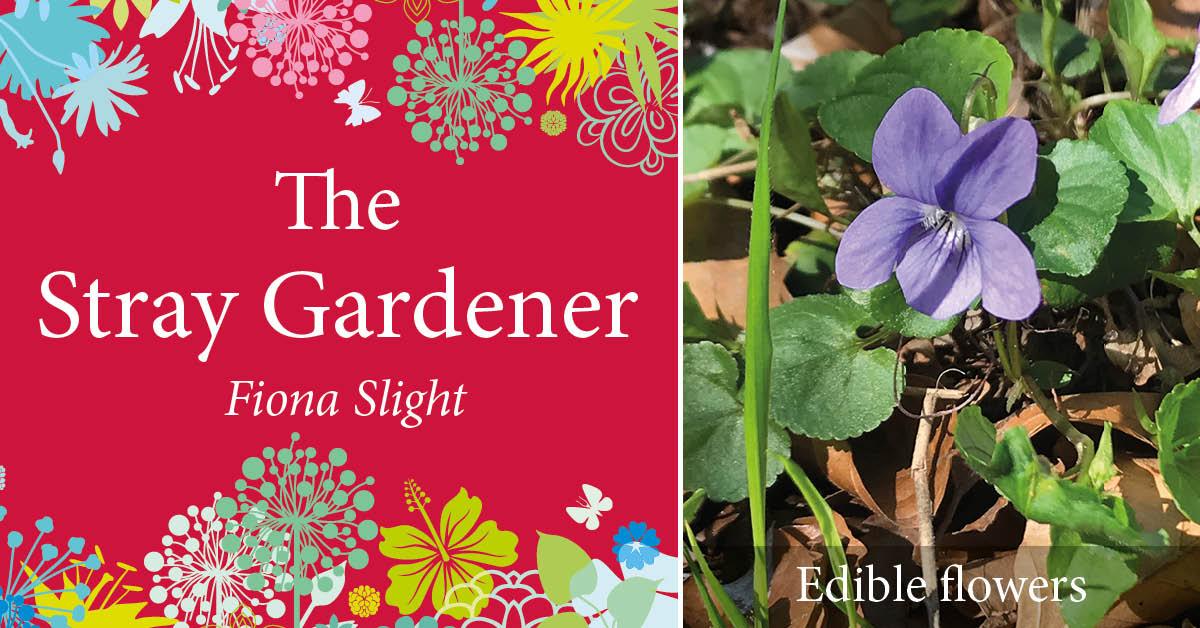Subscribe to trusted local news
In a time of both misinformation and too much information, quality journalism is more crucial than ever. By subscribing, you can help us get the story right.
- Subscription costs less than £1 a week with an annual plan.
Already a subscriber? Log in here.
05
Jun 2021
Stray Gardener: Flavourful edible flowers

 The Stray Gardener is written by Rudding Park’s Kitchen Gardener, Fiona Slight. Fiona has worked in horticulture for more than 30 years in the UK and abroad, and specialises in growing fruit and vegetables for fine dining. This month, Fiona's been growing (and eating!) edible flowers - from nasturtiums and rosemary to sunflowers and dahlias. She also shares her top tips for what we should be doing in our gardens this June.
The Stray Gardener is written by Rudding Park’s Kitchen Gardener, Fiona Slight. Fiona has worked in horticulture for more than 30 years in the UK and abroad, and specialises in growing fruit and vegetables for fine dining. This month, Fiona's been growing (and eating!) edible flowers - from nasturtiums and rosemary to sunflowers and dahlias. She also shares her top tips for what we should be doing in our gardens this June.
The first flower I remember eating, was a nasturtium. I was around 9 or 10 years old and it was in my primary school garden. It was quite a good one to start with, as the strong peppery taste really packed a punch and left a massive impression on me, which was probably one of the reasons I have such an obsession with all things garden, flower and edible!
The use of flowers for culinary reasons goes back a long way. Even the Romans used flowers such as violets and roses in their cooking and you may find that you already have quite a lot of edible flowers in your garden already. If you grow herbs, then rosemary, dill, lavender, thyme, borage and basil are just a few that provide gorgeous flowers that you can use either as garnish or to add to the flavour of the dish. Chive flowers are particularly good for separating the petal segments and sprinkling over egg dishes or potato salad to give a hint of colour and a subtle chive taste.
Fruit trees also produce edible flowers. Apple blossom flowers can make fantastic jelly and if you have a huge amount of blossom it’s a great way to start thinning out your apples before they have been pollinated (although a little bit fiddly!). Vegetable wise, courgette flowers are very popular for savoury dishes, with the large flowers ideal to use for stuffing or as tempura. If your rocket or radish plants start to go to seed, hold off on pulling them out, as the flowers are equally tasty and a beautiful gentle peppery addition to salads or meat dishes.
If you grow bedding plants, these can be used too. Cornflowers, dahlias, sunflowers, sweet William and marigolds are all perfectly edible and taste even better if the petals are separated from the green part of the flower, which can be a little bitter to taste. Viola, (wild or garden grown) makes a fantastic ice cream or sorbet (you do need to pick quite a lot of flowers for this). Most petals can also be crystallised in sugar making a gorgeous tasty addition to the top of cakes and puddings. Pelargonium ‘Attar of Roses’ is especially good for this.
When selecting the flowers you are going to use, avoid old, faded or dusty flowers and from areas that are well used by dog walkers. Watch out for insects, especially when picking early in the morning as they can use flowers as a hiding place over night. Either brushing over the flowers before picking or giving them a little shake once picked generally helps them to move on. It is a good idea to give them a gentle wash once picked. I generally put them in a sieve and hold them under the cold tap, giving the sieve a gentle shake now and again to move them around. I then rest them on clean kitchen towel to soak up the excess moisture before putting them in a sealed container in the fridge until I need them.
Remember to make sure you know exactly what the flower is you are eating, as some can be poisonous or cause irritation. If you are not sure, don’t eat it until you can get it properly identified.
The Stray Gardener's Top Tips for June
- If you have bulbs naturalised in your lawns, these can now be cut down and tidied up.
- Get the hoe out regularly to keep weeds under control in your beds and borders. A dry, sunny day is best for this.
- If the weather starts to get dry, remember to check and water any trees and shrubs you planted earlier in the year to ensure they establish well.
- If you are growing carrots, now is the time to protect them from carrot root fly with fine mesh or fleece.
- If you haven’t already done so, it’s time to get your bedding plants, containers and hanging baskets outside and in position.
0